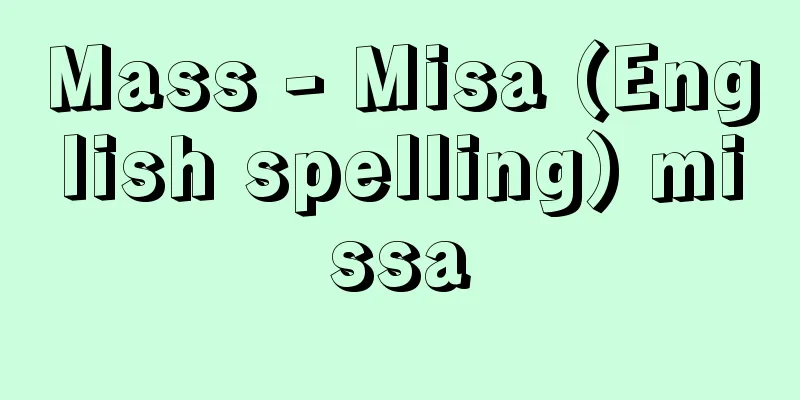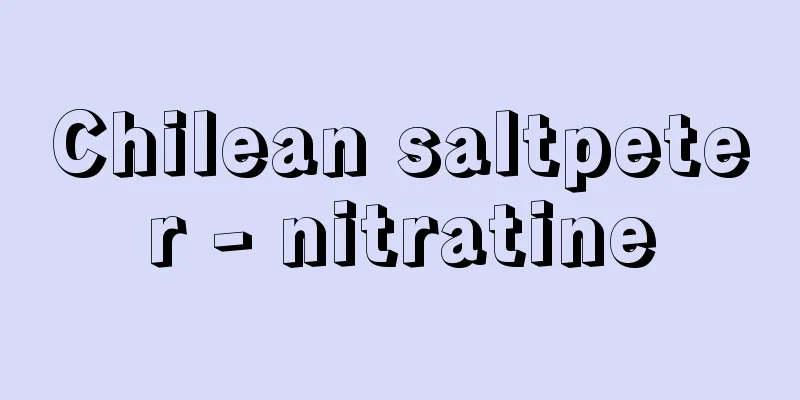Mass - Misa (English spelling) missa

|
The most important celebration in the Catholic Church. It is called the Eucharist. It is a festival celebrated by believers who gather in churches on Sundays. Its origins date back to the establishment of Jesus Christ. On the night before he was crucified, when he shared the Last Supper with his disciples, he took bread and said, "This is my body, which is given for you," and took a cup of wine, saying, "This is the cup of my blood, the blood of the new covenant, which is poured out for you," and commanded his disciples, "Do this in remembrance of me." Based on this command, the disciples gathered in the evening and began to "break bread" (Acts of the Apostles). This was then moved to Sunday morning, the "Lord's Day," and Bible readings and sermons were added in imitation of Jewish ceremonies, and various forms of mass came to be held over time. There were many different forms, including the Roman Rite, the Byzantine Rite, and the Coptic Rite. Based on the decision of the Council of Trent, the Roman Rite was established (1570), and this became the mass liturgy for the entire Roman Catholic Church. Because this was in Latin, the exact same Mass could be celebrated anywhere in the world, and it became a symbol of the unity and unity of the Church. However, since ordinary believers did not understand Latin and therefore participated in Mass as a formality without understanding the deeper meaning of the Mass, the Second Vatican Council (1962-65) began to use the national language of each country. The significance of the Mass is, first and foremost, to recall the crucifixion and resurrection of the Lord Christ and to participate in that mystery. It is not merely a ritual, but under the sign of bread and wine, Christ's work of atonement is realized. In this sense, the Mass is one of the sacraments. The sacrifice of Christ on the cross and the glory of his resurrection are made present in the Mass. By attending Mass on Sundays, believers offer themselves together with Christ and pray for the vitality and grace to live a life that imitates Christ for the week. The second significance of the Mass is that it is a "celebration of thanksgiving," in which we give thanks to God. The early church called the Mass the "Lord's Supper," and believers ate together with the Lord Jesus and gave thanks to God. From there, it became a family meal where God's children gathered together and a festival in which they gave thanks to God the Father (in Shinto terms, it is called ``Naorai''). Masses are broadly divided into Missa cantata (sung mass) and Missa lecta (read mass). A sung mass accompanied by several deacons is called Missa sollemnis (solemn mass). A sung mass by a bishop or prelate is called Missa pontificalis (high pontifical mass). The Mass rite consists of five parts: the opening rite, the liturgy of the word, the liturgy of the Eucharist, the rite of Communion, and the closing rite. The center of the Mass is the Liturgy of the Eucharist. After the consecration of the bread and wine, a preface and a hymn of thanks are sung, followed by the central part, the Eucharistic Prayer. There are currently four types of Eucharistic Prayer, from which the celebrant can choose depending on the occasion. The closing ceremony includes a blessing of dispatch and a closing address, and the name "Mass" comes from what was once said in Latin, "Ite, missa est" (Go, the ceremony is ended). [Kadowaki Yoshiyoshi] "Mass: Its Meaning and History" by Yoshimasa Tsuchiya (1977, Akashi Shobo) Source: Shogakukan Encyclopedia Nipponica About Encyclopedia Nipponica Information | Legend |
|
カトリック教会で行われる祭儀のなかでもっとも重要な祭儀。感謝の聖体祭儀といわれる。日曜日に教会に信徒が集まって祝う祭りである。その起源はイエス・キリストの制定による。キリストが十字架にかけられる前夜、弟子たちと最後の晩餐(ばんさん)をともにしたとき、パンをとり、「これはあなたがたのために渡される私の体である」といい、ぶどう酒の入った杯をとり、「これは私の血の杯、あなたがたのために流される新しい契約の血である」といって、「これを私の記念として行え」と弟子たちに命令した。この命令に基づいて、弟子たちは夕方集まって、「パンを裂く」(使徒行録)ことを行い始めた。それが「主の日」である日曜日の朝に移され、ユダヤ教の祭式に倣って聖書朗読や説教が加えられ、時代とともにいろいろな形のミサが行われるようになった。ローマ典礼、ビザンティン典礼、コプト式典礼など多彩であった。トリエント公会議の決定に基づいて、ローマ式典礼が定められ(1570)、これがローマ・カトリック教会全体のミサ式文となった。これはラテン語であったので、世界のどこでもまったく同じミサがたてられ、教会の一致と統一のシンボルともなった。しかし、一般信徒はラテン語を解せず、ミサの深い意味も理解することなく、形式的にミサにあずかることともなったので、バチカン第二公会議(1962~65)によって、各国別の国語が使用されるようになったのである。 ミサの意義は、第一に主なるキリストの十字架と復活を想起し、その神秘に参与することである。単なる儀式ではなく、パンとぶどう酒のしるしのもとに、キリストの贖罪(しょくざい)の働きが実現されるのである。この意味でミサはサクラメント(秘蹟(ひせき))の一つである。キリストの十字架の犠牲と復活の栄光がミサのうちに現在化する。信徒は日曜日にミサにあずかり、キリストとともに自分の身を捧(ささ)げ、その1週間キリストに倣う生活ができる活力と恵みを祈るのである。ミサは第二に「感謝の祭儀」ともいわれるように神に感謝を捧げることである。初代教会はミサを「主の晩餐」とよび、信徒が主イエスを中心としてともに食事をし、神に感謝を捧げた。そこから、神の子供たちが集まってなす家族的食事であり、ともに父なる神に感謝する祭り(神道(しんとう)的にいえば「なおらい」)である。 ミサの種類は歌ミサMissa cantataと読誦(どくしょう)ミサMissa lectaに大別される。数人の助祭を伴ってなされる歌ミサを荘厳ミサMissa sollemnisという。司教や高位聖職者の歌ミサを高座ミサMissa pontificalisとよぶ。ミサの式次第は、開祭の儀、ことばの典礼、感謝の典礼、交わりの儀、閉祭の儀の五部からなっている。ミサの中心は感謝の典礼にある。パンとぶどう酒の奉献のあとに叙唱と感謝賛歌が歌われたのち、中心部分である奉献文に続く。奉献文は現在4種類あり、司式者がそのときに応じてそのなかから選べる。閉祭の儀では派遣の祝福と閉祭の挨拶(あいさつ)があるが、昔はラテン語で「イテ・ミサ・エスト」Ite, missa est(行きなさい、祭儀は終わりました)といわれたことから、ミサの名称が生まれた。 [門脇佳吉] 『土屋吉正著『ミサ――その意味と歴史』(1977・あかし書房)』 出典 小学館 日本大百科全書(ニッポニカ)日本大百科全書(ニッポニカ)について 情報 | 凡例 |
Recommend
Color fastness - Senshokukenroudo
The degree of fastness of dyes to various external...
Sacy, Antoine Isaac Silvestre de
Born: September 21, 1758 in Paris Died: February 2...
Toughness
…Furthermore, there is a double cup type cut surf...
Yang Flame
A Chinese politician in the mid-Tang Dynasty. His...
Silk River
...The river originates in the Kinunuma Marshland...
Surface chemistry - kaimenkagaku (English spelling) surface chemistry
A branch of chemistry that systems up the phenome...
《Über den Bau und die Entstehung der japanischen Inseln》 (English notation) UberdenBauunddieEntstehungderjapanischenInseln
…After that, he planned a geological survey of th...
Ahmadnagar Kingdom - Ahmadnagar Kingdom (English spelling)
A Muslim kingdom (1489-1636) in western India. It ...
Juban (undergarment) - Juban
Undergarments for traditional Japanese clothing. T...
Tetramethylsilane
The chemical formula is (CH 3 ) 4 Si. It is abbrev...
Main line section - Main line section
These are lines that JNR (now JR) believed could o...
Kazimierz Dejmek
1924‐2002 Polish director. Known for his orthodox ...
Collective bargaining - dantaikosho
It refers to negotiations between a labor union a...
Pietroasa
…The remains of a monument commemorating the vict...
Gan County - Gan County
…It became a city in 1949. Gan County is a separa...



![Tsuchiyama [town] - Tsuchiyama](/upload/images/67cc3c582ae08.webp)





